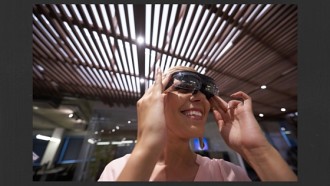Posts Tagged ‘technology in libraries’

Bringing Virtual Reality to Our Senior Patrons
For libraries in possession of VR hardware, the technology offers an incredible new avenue for serving our senior communities.

For libraries in possession of VR hardware, the technology offers an incredible new avenue for serving our senior communities.